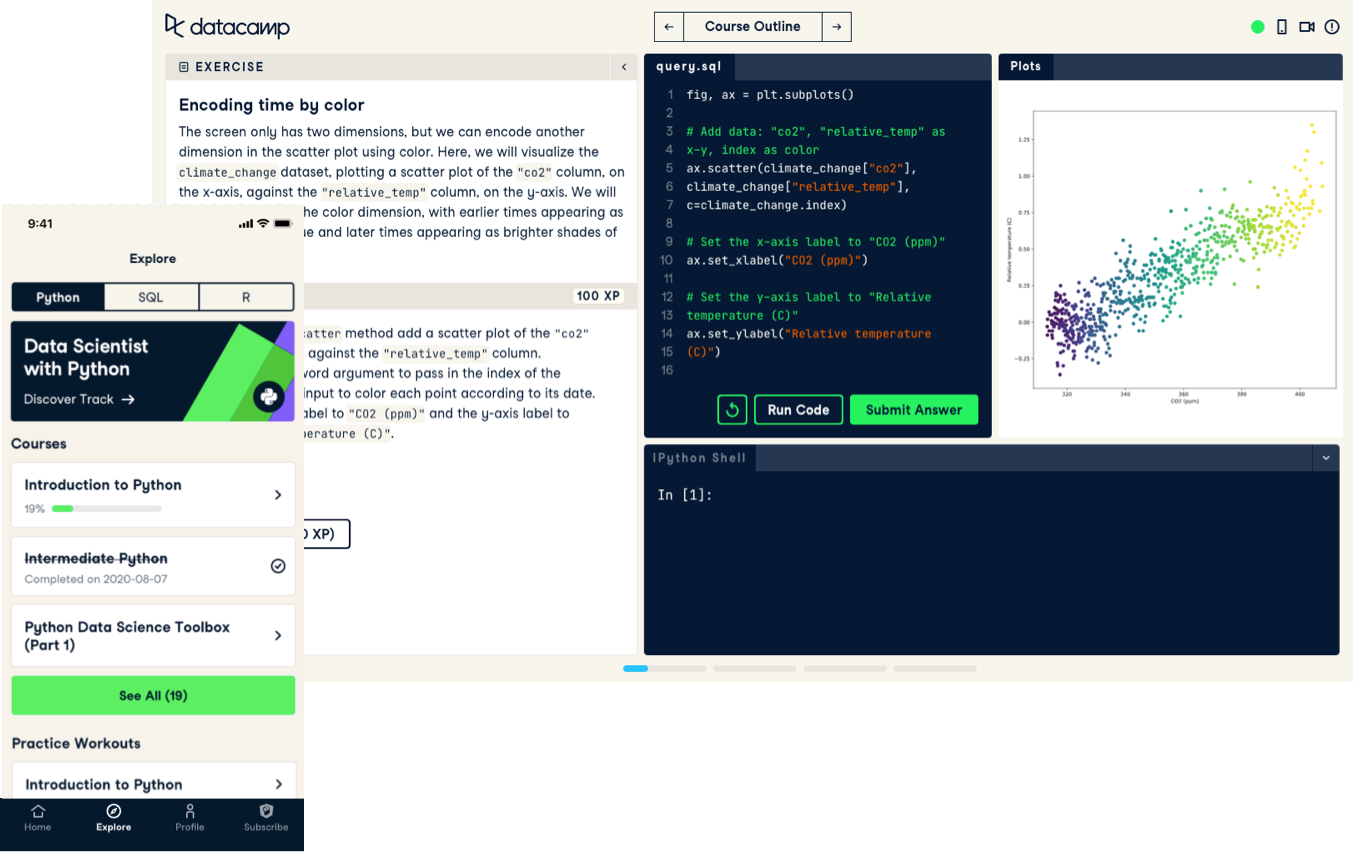Visualizing Geospatial Data in R
Learn to read, explore, and manipulate spatial data then use your skills to create informative maps using R.
Follow short videos led by expert instructors and then practice what you’ve learned with interactive exercises in your browser.

Learn to read, explore, and manipulate spatial data then use your skills to create informative maps using R.
This course covers everything you need to know to build a basic machine learning monitoring system in Python
Dive into our Tableau case study on supply chain analytics. Tackle shipment, inventory management, and dashboard creation to drive business improvements.
Make it easy to visualize, explore, and impute missing data with naniar, a tidyverse friendly approach to missing data.
Learn how to segment customers in Python.
Develop the skills you need to clean raw data and transform it into accurate insights.
Learn how to use Python to analyze customer churn and build a model to predict it.
Step into the role of CFO and learn how to advise a board of directors on key metrics while building a financial forecast.
This Power BI case study follows a real-world business use case where you will apply the concepts of ETL and visualization.
Master core concepts about data manipulation such as filtering, selecting and calculating groupwise statistics using data.table.
In this course, you’ll learn to classify, treat and analyze time series; an absolute must, if you’re serious about stepping up as an analytics professional.
Learn how to use RNNs to classify text sentiment, generate sentences, and translate text between languages.
Extract and visualize Twitter data, perform sentiment and network analysis, and map the geolocation of your tweets.
Learn how to design and implement triggers in SQL Server using real-world examples.
Apply statistical modeling in a real-life setting using logistic regression and decision trees to model credit risk.
Learn how to load, transform, and transcribe speech from raw audio files in Python.
Learn to bring data into Microsoft Fabric, covering Pipelines, Dataflows, Shortcuts, Semantic Models, security, and model refresh.
Learn to streamline your machine learning workflows with tidymodels.
Work with risk-factor return series, study their empirical properties, and make estimates of value-at-risk.
In this course youll learn techniques for performing statistical inference on numerical data.
From customer lifetime value, predicting churn to segmentation - learn and implement Machine Learning use cases for Marketing in Python.
Learn tools and techniques to leverage your own big data to facilitate positive experiences for your users.
Learn how to analyze survey data with Python and discover when it is appropriate to apply statistical tools that are descriptive and inferential in nature.
Learn to write scripts that will catch and handle errors and control for multiple operations happening at once.
In ecommerce, increasing sales and reducing costs are key. Analyze data from an online pet supply company using Power BI.
Advance you R finance skills to backtest, analyze, and optimize financial portfolios.
Get hands-on experience making sound conclusions based on data in this four-hour course on statistical inference in Python.
Learn to solve increasingly complex problems using simulations to generate and analyze data.
Leverage tidyr and purrr packages in the tidyverse to generate, explore, and evaluate machine learning models.
Learn how to use spaCy to build advanced natural language understanding systems, using both rule-based and machine learning approaches.